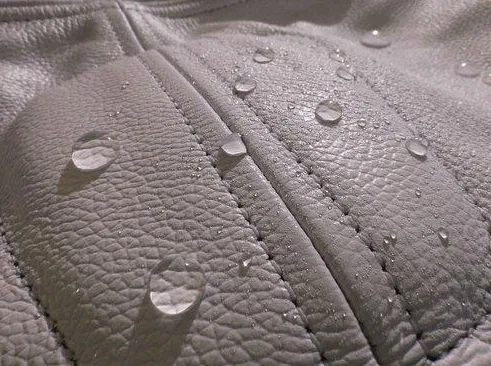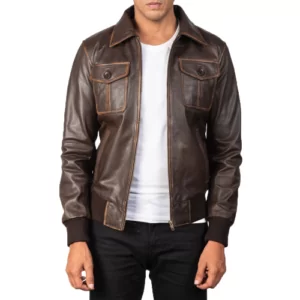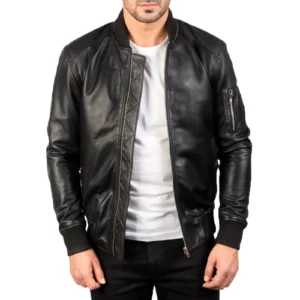
The authenticity of leather is often a point of concern for consumers seeking quality products that offer durability and style. With the proliferation of faux leather and synthetic materials in the market, distinguishing genuine leather from its imitations has become increasingly important. While various methods exist for verifying the authenticity of leather, one common approach involves using water to assess its purity.
Water Absorption Test
The water absorption test is a widely practiced method for determining whether leather is genuine or synthetic. This simple yet effective technique relies on the unique properties of natural leather to absorb water, whereas synthetic materials typically repel moisture.
To conduct the test, a small droplet of water is applied to the surface of the leather. Genuine leather will readily absorb the water, causing the droplet to darken or disappear as it is absorbed into the material. In contrast, synthetic leather or heavily treated leather will resist water absorption, causing the droplet to beat up on the surface without being absorbed. Anyway, here are some methods of checking pure leather with water:
Observing Water Absorption Patterns

In addition to the initial water droplet test, observing the patterns of water absorption can provide further insight into the authenticity of leather. Genuine leather tends to absorb water evenly across its surface, with no distinct boundaries or areas of resistance. This uniform absorption pattern is characteristic of natural materials and reflects the porous structure of leather.
Conversely, synthetic leather or leather that has been heavily treated may exhibit uneven water absorption, with certain areas repelling water while others absorb it. These inconsistencies in water absorption can indicate the presence of synthetic additives or surface treatments that alter the material’s natural properties.
Adapting to Variations
It’s important to note that while the water absorption test is a reliable method for detecting genuine leather, there may be variations in results depending on factors such as the type of leather and its finish. For example, some types of leather, such as full-grain or aniline leather, may exhibit more pronounced water absorption due to their natural characteristics, while others, like corrected-grain leather, may have been treated with surface coatings that affect water repellency. Understanding these variations and interpreting the test results in context can enhance the accuracy of assessing leather authenticity.
Considering Time and Patience
It is important to exercise patience when conducting the water absorption test, as genuine leather may take some time to fully absorb the water droplet. Depending on factors such as the type of leather and its finish, absorption rates may vary, requiring several minutes for the water to penetrate the material completely.

Allowing sufficient time for the water to be absorbed enables a more accurate assessment of the leather’s authenticity. Rushing the process or prematurely concluding the test may lead to erroneous conclusions, particularly if the leather is of high quality and exhibits slower absorption rates.
Consulting Experts and Professionals
While the water absorption test can provide valuable insights into the authenticity of leather, it is not infallible and may yield inconclusive results in certain cases. Consulting experts and professionals in the leather industry can offer additional guidance and expertise in verifying the authenticity of leather products.
Experienced leather craftsmen, artisans, and retailers possess intimate knowledge of leather materials and can provide valuable insights based on their expertise. They may employ supplementary methods or techniques to complement the water absorption test, such as visual inspection, tactile assessment, or chemical analysis.
-
Product on sale
 Vintage Ryan Gosling Blade Runner Jacket, 2049 Men’s Cotton Trench CoatOriginal price was: $170.00.$129.99Current price is: $129.99.
Vintage Ryan Gosling Blade Runner Jacket, 2049 Men’s Cotton Trench CoatOriginal price was: $170.00.$129.99Current price is: $129.99. -
Product on sale
 Cafe Racer Black Leather Jacket for Men – Premium Stylish Multi-PocketsOriginal price was: $220.00.$159.99Current price is: $159.99.
Cafe Racer Black Leather Jacket for Men – Premium Stylish Multi-PocketsOriginal price was: $220.00.$159.99Current price is: $159.99. -
Product on sale
 Mens Cafe Racer Leather Jacket BrownOriginal price was: $220.00.$159.99Current price is: $159.99.
Mens Cafe Racer Leather Jacket BrownOriginal price was: $220.00.$159.99Current price is: $159.99. -
Product on sale
 Mens Biker Style Asymmetrical Real Black Leather JacketOriginal price was: $210.00.$159.99Current price is: $159.99.
Mens Biker Style Asymmetrical Real Black Leather JacketOriginal price was: $210.00.$159.99Current price is: $159.99. -
Product on sale
 Biker Men’s Real Leather Black Bomber JacketOriginal price was: $189.99.$149.99Current price is: $149.99.
Biker Men’s Real Leather Black Bomber JacketOriginal price was: $189.99.$149.99Current price is: $149.99. -
Product on sale
 Bomber Genuine Leather Men’s Jacket Hooded – Black and BrownOriginal price was: $199.99.$149.99Current price is: $149.99.
Bomber Genuine Leather Men’s Jacket Hooded – Black and BrownOriginal price was: $199.99.$149.99Current price is: $149.99. -
Product on sale
 Lambskin Leather Jacket – Men’s Casual Style Café Racer Real Quilted Style for MotorcycleOriginal price was: $220.00.$179.99Current price is: $179.99.
Lambskin Leather Jacket – Men’s Casual Style Café Racer Real Quilted Style for MotorcycleOriginal price was: $220.00.$179.99Current price is: $179.99. -
Product on sale
 Mens’ Aaron Brown Leather Bomber JacketOriginal price was: $199.99.$159.99Current price is: $159.99.
Mens’ Aaron Brown Leather Bomber JacketOriginal price was: $199.99.$159.99Current price is: $159.99. -
Product on sale
 Bomber Genuine Leather Men’s JacketOriginal price was: $220.00.$159.99Current price is: $159.99.
Bomber Genuine Leather Men’s JacketOriginal price was: $220.00.$159.99Current price is: $159.99.
Conclusion
In conclusion, the water absorption test is a practical and accessible method for checking the purity of leather. By observing the material’s response to water, consumers can gain valuable insights into its authenticity and quality. However, it is essential to exercise patience, keen observation, and critical thinking when conducting the test, as factors such as leather type, finish, and treatment can influence the results. Consulting experts and professionals in the leather industry can provide valuable guidance and assistance in verifying the authenticity of leather products, ensuring that consumers make informed purchasing decisions.










